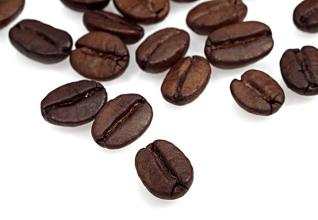Flavor description of exocarp and endocarp of coffee bean the degree of grinding in the producing area of the variety
Coffee bean exocarp and endocarp Flavor Description Taste Variety Region Grind
Sun-dried beans have a full natural mellow flavor and better consistency, lower acidity and more varied flavor. Alcoholism is an important condition for espresso coffee, which produces a strong alcohol and smooth feeling like wine. Espresso lovers can increase the amount of sun-dried beans. Yemen mocha, Ethiopia Harar, Brazil, Indonesia Sulawesi coffee beans more than this method of treatment 1. Bean selection: The harvested fruit is placed in a tank of water. The ripe fruit will sink, while the immature and overripe fruit will float up and can be rejected.
2. Drying: Put the selected ripe fruits on the square for 5-6 days until they are fully dried. At this time, the fruit turns dark brown, moisture content 13% 3. Shelling: After drying, the peel becomes fragile and easy to fall off, which can be removed by machine.
Enterprise farms usually set up their own shelling factories, small farms are handed over to the processing center for processing.
4. Selection and grading: delicate farms will identify defective beans manually or mechanically and select them for disposal.
The manual selection method usually uses a conveyor belt about 1 meter wide, with several female workers sitting on both sides to visually select the bad beans; some good farms even go through several selections until no defective beans are found.
Machine selection rules use computers to identify and weed out defective beans, followed by a grading process that divides coffee beans into quality grades according to established criteria, with good coffee going to the specialty coffee market and bad coffee going to the commercial coffee market.
5. Polishing: The dehulling process can only remove the exocarp and endocarp. At this time, the silver film is still wrapped around the outer layer of the seed. This film must be removed by machine. Then, fill the coffee beans into 60KG bags. The weight of bags varies slightly from region to region. Most of them use sacks.
In the coffee bean sorting process (the process of distinguishing the size and picking out the poor quality coffee beans), the "round beans" are selected from the "flat beans." Because coffee beans are scarce, they should be sold differently from the usual coffee beans. Brazil, Blue Mountain and other places coffee round beans are very famous, than coffee flat beans sold at a higher price. But for farmers, there should be even one coffee bean in a fruit, but only one grows, which will greatly affect the yield of coffee beans, so this is not a happy thing. There are also some coffee berries that grow only one seed (5% to 20% of the total), which is caused by fertilization or environmental factors, resulting in severe deterioration of seed growth on one side, which looks round (in this case, the seed on the other side will not be produced), this round coffee bean, we call it "round beans" Coffee beans are basically two growing together. So the beans will be flat on one side. This kind of coffee bean with one side, we call it "flat bean". After peeling off the flesh, you will see that there is a thin layer of skin on the seed. This is the endocarp of the coffee bean, and the seed with the inner flesh is called "parchment coffee bean". The endocarp is also attached to the surface of a layer of sticky material, this layer of sticky material is called pectin. To remove coffee beans, remove the pulp, pectin and endocarp.

Important Notice :
前街咖啡 FrontStreet Coffee has moved to new addredd:
FrontStreet Coffee Address: 315,Donghua East Road,GuangZhou
Tel:020 38364473
- Prev

Coffee beans Red wine processing Flavor description Processing characteristics Origin introduction
Coffee beans red wine processing method flavor description processing characteristics origin introduction selected coffee cherries are placed by farmers uncle in a specific container, this container should be similar to red wine fermentation plug, or a single vent valve device. In this way, carbon dioxide can escape through the device to control the concentration of air in the container. At this time, the coffee cherries in the container entered
- Next

Coffee bean red wine treatment method flavor description characteristics processing and growth process
Coffee bean red wine treatment flavor description characteristics processing growth process next, let's talk about the specific process of fermentation. First of all, Colombian farmers carefully pick coffee cherries and carefully select coffee red fruits to ensure that among the coffee cherries selected for processing, the percentage of immature cherries is less than 2%, defective beans less than 3%, and floating beans less than 5%. Pick
Related
- Guji coffee producing area of Guji, Ethiopia: Humbela, Shakiso, Wulaga
- What is the most expensive variety of Qiloso in BOP multi-variety group?
- How to store the coffee beans bought home?
- Why are Yemeni coffee beans so rare now?
- Ethiopian Sidamo all Red Fruit Sun Sun Santa Vini Coffee beans
- SOE is mostly sour? What does it mean? Is it a single bean? what's the difference between it and Italian blending?
- Is Italian coffee beans suitable for making hand-brewed coffee?
- How to choose coffee beans when making cold coffee? What kind of coffee beans are suitable for making cold coffee?
- Just entered the pit to make coffee, what kind of coffee beans should be chosen?
- Can only Japan buy real Blue Mountain Coffee? What are authentic Jamaican Blue Mountain coffee beans?

